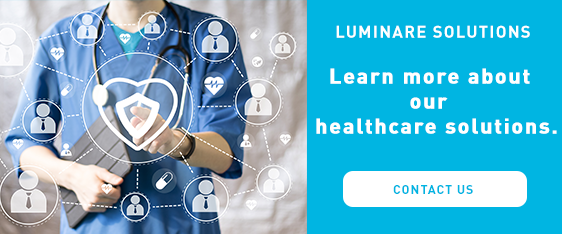
Do you feel more efficient in your healthcare organization?
By: Natalie Cheng
August 2nd 2021
Technology has changed the lives of many and continues to impact every industry. Think about it. Without our current technology, we wouldn’t have access to communication channels across the globe. Technology has enabled us to attend a doctor’s appointment even if you aren’t in the same time zone. So how has technology impacted your healthcare organization?
Technology’s Impact on Healthcare Efficiency
Health technologies such as telemedicine, electronic health records, and interoperable solutions have made a major impact on healthcare organizations. One major benefit of these technologies is improving efficiencies in healthcare organizations and systems. How have they done this?
Telemedicine
Before the pandemic, telemedicine was already used by various countries, but not all. COVID-19 sped up and encouraged rapid implementation of virtual care strategies across the world. From a study conducted by the International Hospital Federation (IHF), the level of telemedicine maturity varied considerably across different countries. For those countries that had already begun to use telemedicine several years ago, “employers saw an opportunity to generate efficiencies while improving outcomes. The opportunities for efficiency, including lower episodic costs and lower cycle of care costs were significant; revenue growth was not the only driver.”
According to a report from Fam Med Community Health, telemedicine has been rapidly increasing in the United States. US hospitals that connect with patients through technology has increased from 35% to 76%.
From a recent study, telehealth has stabilized at levels 38 times higher than before the COVID-19 pandemic. Even though usage has dropped slightly since its peak in spring 2020, the attitudes of patient and physicians towards telehealth have improved. Around 40% of consumers that were surveyed are planning on continuing to use telehealth moving forward, which is up 11% prior to COVID-19.
Electronic Health Records (EHR)
In terms of patient medical records, electronic health records (EHR) have made a major impact on healthcare. Instead of using large paper files that departments have to transfer, medical records are now located in one centralized system. The time it took for someone to locate a medical record has now been reduced thanks to EHR systems. This technology has decreased the tedious process of maintaining paper files. In addition, EHR systems have helped healthcare organizations improve efficiencies by enabling faster and easier medical billing. According to HealthIT.gov, EHR-enabled medical practices report:
- Improved medical practice management through integrated scheduling systems that link appointments directly to progress notes, automate coding, and managed claims
- Time savings with easier centralized chart management, condition-specific queries, and other shortcuts
- Enhanced communication with other clinicians, labs, and health plans through:
- Easy access to patient information from anywhere
- Tracking electronic messages to staff, other clinicians, hospitals, labs, etc.
- Automated formulary checks by health plans
- Order and receipt of lab tests and diagnostic images
- Links to public health systems such as registries and communicable disease databases
Healthcare Interoperability Solutions
To further increase healthcare organization efficiencies and integrate disparate systems together, interoperability solutions have been developed. These solutions give different information systems, devices, and applications the ability to access, exchange, integrate, and use data within and across organizational, regional, and national boundaries to provide more timely and seamless portability of healthcare information. According to HealthTech Magazine, interoperability solutions can reduce medical errors by allowing data to be shared across systems and applications. Having a lack of patient information can ultimately mean the difference between knowing about a patient’s pre-existing condition and making an unintended fatal error.
From an IDC white paper, the healthcare industry is projected to rapidly increase the amount of real-time data created and improve data readiness. “With these and other healthcare analytics advancements, interoperable data would further enable providers to quickly identify the root of a patient’s problem and empower them to make faster and more informed decisions” (HealthTech).
Another area where healthcare interoperability solutions can improve efficiency is in the patient experience. For example, interoperability solutions can reduce or even eliminate the need to fill out multiple forms or re-explain one’s medical history. This can help lead to more accurate care and faster time to treatment.
Implementing Healthcare Technology
When a healthcare organization decides to implement a new technology, they must remember to view it as a clinical transformation opportunity to improve patient outcomes and generate efficiencies for the full patient care journey instead of only focusing on cost reduction. According to the IHF, focusing on cost reduction can actually reduce financial benefits across a patient’s full cycle of care.
By making clinical transformation the main goal of a new technology implementation, organizations will be better focused on getting value from the solution and implementing it properly to fully realize all its benefits.
Is your organization looking for healthcare solutions that can improve efficiencies and workflows? Contact us to see what solutions would best fit your organization’s needs.


